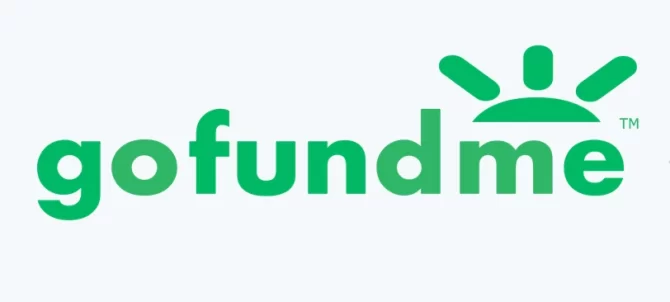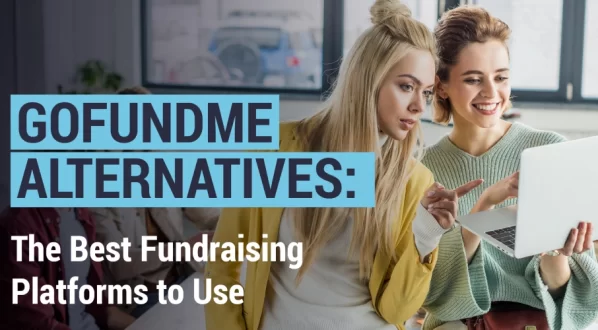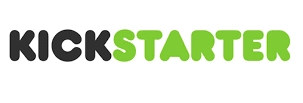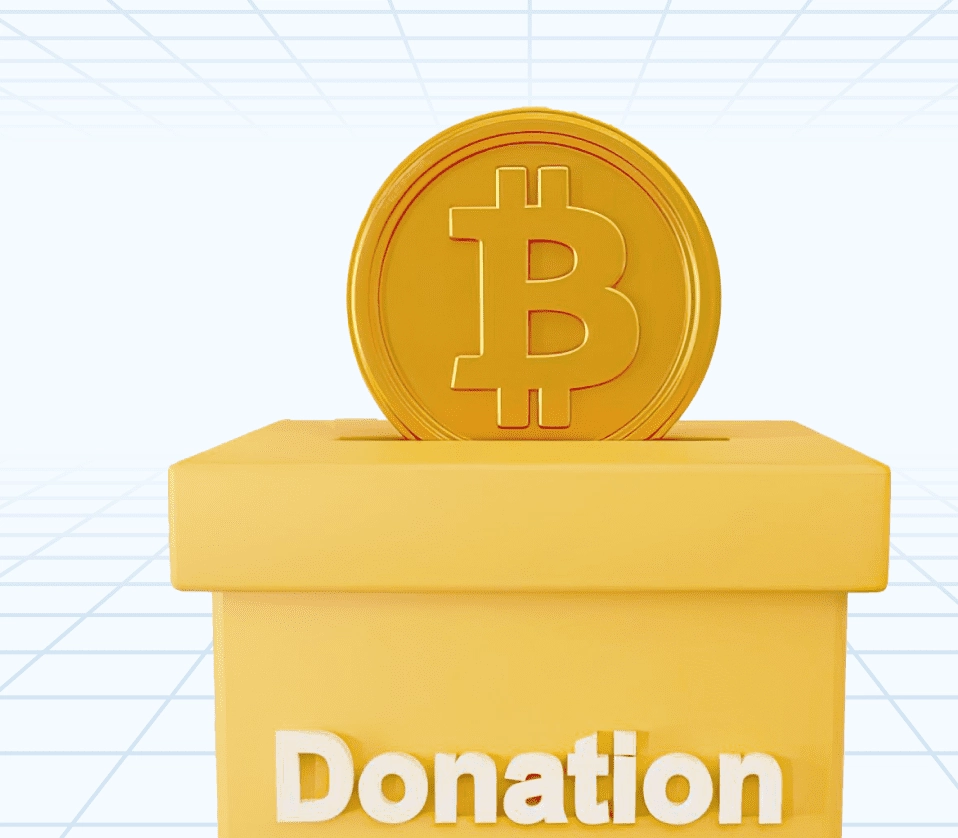In today’s digital age, crowdfunding platforms like GoFundMe play a pivotal role in connecting individuals and communities with causes they care about. GoFundMe empowers users to create fundraising campaigns for personal needs, charitable endeavors, and community projects, leveraging the power of social networks to amplify impact. While GoFundMe is a leading platform, exploring GoFundMe alternatives can also provide diverse options for those seeking different features or support structures. From medical expenses to educational pursuits and disaster relief efforts, GoFundMe provides a streamlined platform where compassion meets action. This introduction explores how GoFundMe harnesses technology to facilitate generosity, transparency, and support, ensuring that each campaign has the potential to make a meaningful difference in someone’s life.
Overview of GoFundMe and its Evolution
Introduction to GoFundMe

GoFundMe is a leading crowdfunding platform that enables individuals, organizations, and nonprofits to raise funds for a wide range of personal, medical, educational, and charitable causes. Founded in 2010 by Brad Damphousse and Andrew Ballester, the platform quickly gained popularity for its user-friendly interface and ability to connect people in need with a global community of donors.
GoFundMe is a free fundraising platform in the sense that there are no upfront costs or platform fees to start and run a campaign. However, it’s important to note that while the platform itself is free to use, there are still payment processing fees deducted from each donation. These fees are typically around 2.9% + $0.30 per donation and cover the costs of processing credit card payments.
So, while GoFundMe is often described as a “free” platform, it doesn’t charge platform fees, but payment processing fees still apply.
Evolution of GoFundMe
Initially launched as a general fundraising platform, GoFundMe’s early success was driven by its simplicity and effectiveness in helping users raise funds for personal emergencies, medical bills, education expenses, and various charitable initiatives. Over the years, the platform has evolved significantly to offer enhanced features and support for diverse fundraising campaigns.
Key Milestones and Growth
- Expansion of Categories: GoFundMe expanded beyond personal fundraising to support campaigns for nonprofits, disaster relief, community projects, and creative ventures. This diversification broadened its appeal and user base.
- Acquisitions and Integrations: In 2017, GoFundMe acquired CrowdRise, an online fundraising platform for nonprofits and charities. This acquisition bolstered GoFundMe’s capabilities in supporting large-scale charitable campaigns and event-based fundraising.
- Global Reach: With operations in multiple countries and support for multiple currencies, GoFundMe has become a global platform. It facilitates cross-border fundraising efforts and connects donors and beneficiaries worldwide.
- Impact and Recognition: GoFundMe has facilitated billions of dollars in donations across millions of campaigns, making a significant impact on countless individuals and communities globally. It has received recognition for its role in empowering ordinary people to make a difference through crowdfunding.
- Innovation and Technology: The platform continues to innovate with new features such as mobile app integration, enhanced social sharing tools, and improved campaign analytics. These innovations aim to improve user experience and campaign effectiveness.
Explore more about GoFundMe through our article How does GoFundMe work?
A crowdfunding campaign is an effort to raise money for a specific cause, project, or goal by collecting small contributions from a large number of people, typically through an online platform. These campaigns can be used for a wide range of purposes, including personal needs (like medical expenses), creative projects (such as film production or book publishing), business ventures (like launching a new product), charitable causes, or community initiatives.
GoFundMe Alternative Overview

1. Kickstarter

- Founded: 2009
- Headquarters: Brooklyn, New York, USA
- Target Users: Creative professionals, artists, and innovators
- Purpose: Kickstarter focuses on creative projects such as films, music, games, art, technology, and design.
- Fees: Kickstarter charges a 5% platform fee on funds raised. There are additional payment processing fees that vary by location.
- Payment Methods: Supports credit/debit cards, Apple Pay, and Google Pay.
- Special Features: Operates on an all-or-nothing funding model where projects must reach their funding goal to receive any money. Provides project updates and engagement tools for backers.
Discover more about Kickstarter in our article How does Kickstarter work
2. Indiegogo
- Founded: 2008
- Headquarters: San Francisco, California, USA
- Target Users: Entrepreneurs, creative individuals, and nonprofits
- Purpose: Indiegogo supports a wide range of project categories including tech innovation, creative works, charitable causes, and personal fundraising.
- Fees: Indiegogo takes a 5% fee if you hit your funding goal, but it’s only 4% for nonprofit campaigns. There are additional payment processing fees.
- Payment Methods: Accepts credit/debit cards and PayPal.
- Special Features: Offers both all-or-nothing and flexible funding options. It includes InDemand, which lets you keep raising funds even after you’ve hit your initial goal.
You may also like to read How does Paypal work
3. Patreon

- Founded: 2013
- Headquarters: San Francisco, California, USA
- Target Users: Creators, artists, and content producers
- Purpose: Patreon is all about helping creators and artists get ongoing support, giving them a way to earn a steady income from their fans.
- Fees: Patreon charges a fee ranging from 5% to 12% of monthly earnings, depending on the membership tier chosen by the creator.
- Payment Methods: Supports credit/debit cards and PayPal.
- Special Features: Allows creators to offer exclusive content and rewards to patrons based on subscription tiers. Facilitates ongoing relationships between creators and their supporters.
4. Seedrs

- Founded: 2012
- Headquarters: London, UK
- Target Users: Startups, investors
- Purpose: Seedrs is a top choice for equity crowdfunding, focusing on early-stage startups and companies looking to grow.
- Fees: Seedrs charge a percentage of funds raised plus a completion fee upon successful campaigns.
- Payment Methods: Investors can fund campaigns using credit/debit cards, bank transfers, or other payment methods depending on their location.
- Special Features: Offers a secondary market for trading shares post-investment. Provides legal structures and investor protections for equity investments.
5. Crowdcube

- Founded: 2011
- Headquarters: Exeter, UK
- Target Users: Startups, small businesses, and investors
- Purpose: Crowdcube is another prominent equity crowdfunding platform, primarily for UK-based startups and businesses.
- Fees: Charges a percentage of funds raised plus a completion fee.
- Payment Methods: Accepts credit/debit cards, bank transfers, and other payment methods for investing.
- Special Features: Allows investors to become shareholders in businesses raising funds. Regulated by the Financial Conduct Authority in the UK, providing investor protections.
6. FundRazr

- Founded: 2009
- Headquarters: Vancouver, Canada
- Target Users: Individuals, nonprofits, and communities
- Purpose: FundRazr supports personal causes, nonprofit organizations, and creative projects.
- Fees: Charges a platform fee plus payment processing fees.
- Payment Methods: Accepts credit/debit cards, PayPal, and other payment methods based on regional availability.
- Special Features: Integrates social media sharing tools, provides options for flexible funding, and supports team fundraising efforts.
Know more about how these social media platforms like Instagram and Twitter make money How does Instagram Make Money
Twitter Business Model – Insights into How Twitter Works & Makes Money
Crowdfunding sites are online platforms that allow individuals, businesses, and organizations to raise funds for various causes, projects, or ventures by collecting small contributions from a large number of people. These platforms have become popular for funding everything from personal medical expenses to creative projects, startups, and charitable causes.
Comparative Analysis Of Crowdfunding Platforms
| Platform | Purpose | Fees | Payment Methods | Eligibility Requirements | Special Features |
|---|---|---|---|---|---|
| GoFundMe | Personal causes, | 2.9% + $0.30 per transaction | Credit/debit cards | No specific eligibility requirements | Social sharing tools, mobile app, international reach |
| medical expenses, | (5% platform fee is optional) | PayPal | |||
| charitable projects | Subscription-based funding, tiers, and rewards | ||||
| Kickstarter | Creative projects | 5% platform fee | Credit/debit cards | Project approval is required, one must have a clear goal | All-or-nothing funding, project updates |
| (films, music, games) | Additional payment processing | Apple Pay | |||
| fees based on location | Google Pay | ||||
| Indiegogo | Various categories | 5% platform fee (4% if goal met) | Credit/debit cards | No specific eligibility requirements | Flexible funding options, InDemand program |
| (tech, arts, causes) | Additional payment processing | PayPal | |||
| Patreon | Ongoing creative | Varies by plan (e.g., 5-12%) | Credit/debit cards | Content creators and artists primarily | Subscription-based funding, tiers and rewards |
| work, content | PayPal | ||||
| Fundly | Personal, | 4.9% + $0.30 per transaction | Credit/debit cards | No specific eligibility requirements | Social sharing tools, event management |
| charitable causes | PayPal | ||||
| Crowdrise | Charitable projects, | 2.9% + $0.30 per transaction | Credit/debit cards | Verification for charitable projects | Team fundraising, event support |
| personal causes | (5% platform fee for personal) | PayPal |
Notes
- Fees: Typically include a platform fee (percentage of funds raised) and payment processing fees. Some platforms have additional fees or discounts based on achieving funding goals.
- Payment Methods: Most platforms support credit/debit cards and PayPal, with some offering additional options like Apple Pay or Google Pay.
- Eligibility Requirements: Some platforms have specific criteria or verification processes, especially for charitable or creative projects.
- Special Features: Unique features like all-or-nothing funding (Kickstarter), subscription-based funding (Patreon), and social sharing tools vary across platforms.
Know more about Crowdfunding in our article How does Crowdfunding work
Types of Campaigns Supported Across Crowdfunding Platforms
GoFundMe and other similar platforms support a variety of campaign types, catering to diverse fundraising needs. Here’s an overview of the types of campaigns typically supported, along with specific examples of successful campaigns on each platform:
Personal Emergencies and Medical Expenses
- GoFundMe: Widely used for personal emergencies such as unexpected medical bills, funeral expenses, and natural disaster relief.
- Example: The “Support for Jane’s Cancer Treatment” campaign raised $50,000 to cover medical costs.
Educational Funding
- Kickstarter: Supports educational projects and initiatives, including school programs and student projects.
- Example: The “STEM Education Kit for Underprivileged Schools” project successfully raised $20,000 for educational resources.
You may like to read How does Outschool work
Charitable Causes and Nonprofits
- Indiegogo: Provides a platform for charitable organizations to raise funds for community projects and humanitarian causes.
- Example: The “Clean Water Initiative in Africa” campaign raised $100,000 to build water wells in remote villages.
Read More about how Gofundme makes money in an article by our team; How does Gofundme make money
Creative Projects and Artistic Endeavors
- Patreon: Specializes in ongoing support for artists and creators, allowing fans to pledge monthly contributions.
- Example: A podcast creator on Patreon receives $3,000 monthly from supporters for exclusive content.
Business Ventures and Startups
- Seedrs: Focuses on equity crowdfunding for startups and growth companies looking to raise capital from investors.
- Example: A tech startup on Seedrs successfully raised £500,000 to expand its product line.
Community and Social Causes
- Crowdrise (by GoFundMe): Specifically designed for nonprofit organizations and charities to raise funds through events and campaigns.
- Example: The “Run for Cancer Research” event raised $150,000 through Crowdrise.
Environmental Projects and Sustainability:
- FundRazr: Supports campaigns focused on environmental conservation, sustainability initiatives, and eco-friendly projects.
- Example: The “Planting 1 Million Trees Initiative” campaign on FundRazr raised $50,000 for reforestation efforts.
Global Impact of Crowdfunding Platforms
GoFundMe
- Geographic Availability: Available in multiple countries, allowing users from around the world to create and donate to campaigns.
- Community Impact: GoFundMe has facilitated billions of dollars in donations across diverse campaigns, including medical emergencies, disaster relief, educational support, and charitable causes. Examples include:
- The “Australia Bushfire Relief” campaign raised over $50 million to support communities affected by wildfires.
- Campaigns for individuals in developing countries seeking medical treatments unavailable locally.
Kickstarter
- Geographic Availability: Operates internationally, supporting creative projects and innovations globally.
- Community Impact: Kickstarter campaigns have funded artistic endeavors, tech innovations, and community projects. Examples include:
- The Pebble smartwatch campaign raised over $10 million, revolutionizing wearable technology.
- Film projects from independent filmmakers worldwide, foster creativity and diversity in cinema.
Indiegogo
- Geographic Availability: Global platform supporting a wide range of projects, from tech gadgets to charitable initiatives.
- Community Impact: Indiegogo has empowered entrepreneurs, nonprofits, and creative individuals to bring their ideas to life. Examples include:
- The “Solar Roadways” project raised funds to develop solar-powered roads for sustainable energy solutions.
- Campaigns supporting education in underserved communities and disaster response efforts.
Patreon
- Geographic Availability: International platform connecting creators with patrons for ongoing support.
- Community Impact: Patreon enables artists, musicians, writers, and creators to earn sustainable incomes. Examples include:
- Podcasters and YouTubers fund content creation through monthly subscriptions.
- Artists provide exclusive content and engage directly with their global fan base.
Seedrs
- Geographic Availability: Focuses on equity crowdfunding primarily in Europe, with campaigns from innovative startups.
- Community Impact: Seedrs connects investors with promising businesses, fostering economic growth and innovation. Examples include:
- Tech startups are raising capital for product development and market expansion.
- Sustainable businesses are promoting environmental stewardship and social responsibility.
Crowdrise (by GoFundMe)
- Geographic Availability: Supports charitable fundraising and community events globally.
- Community Impact: Crowdrise has mobilized communities for disaster relief, medical research, and local initiatives. Examples include:
- Marathons and community fundraisers raise funds for medical treatments and humanitarian aid.
- Campaigns supporting educational programs and youth empowerment projects worldwide.
FundRazr
- Geographic Availability: Available internationally, supporting diverse fundraising campaigns including environmental and social causes.
- Community Impact: FundRazr facilitates grassroots initiatives and global movements. Examples include:
- Environmental campaigns are raising funds for conservation projects and renewable energy initiatives.
- Community-driven efforts supporting marginalized groups, humanitarian aid, and cultural preservation.
Future Trends and Innovations in Crowdfunding
Impact Investing
- Trend: Growing interest in impact investing where backers seek both financial returns and positive social or environmental impact from their investments.
- Example: Platforms integrating impact metrics and reporting to attract socially conscious investors.
Cryptocurrency Donations

- Trend: Increasing acceptance of cryptocurrencies (e.g., Bitcoin, Ethereum) for donations and investments on crowdfunding platforms.
- Example: Platforms adopting blockchain technology to enhance transparency and security of transactions.
Want to explore more about Cryptocurrency? Read our article How does Cryptocurrency work
Regulatory Changes
- Development: Evolving regulations impacting crowdfunding practices, such as updated securities laws and tax incentives for investors.
- Example: Introduction of regulatory frameworks to protect investors and ensure compliance with fundraising standards.
Tokenization of Assets
- Development: Utilizing blockchain to tokenize assets, enabling fractional ownership and liquidity of traditionally illiquid assets.
AI and Data Analytics

- Innovation: Integration of artificial intelligence (AI) and machine learning for personalized campaign recommendations, donor behavior analysis, and campaign optimization.
- Example: Predictive analytics tools help campaigners identify potential backers and optimize fundraising strategies.
Virtual Reality (VR) and Augmented Reality (AR)

- Innovation: Use of VR/AR for immersive storytelling and donor engagement, enhancing the impact of campaigns.
- Example: Virtual tours of project sites or AR experiences showcasing the outcomes of funded initiatives.
Global Expansion and Localization
- Trend: Platforms expanding into new markets and adapting services to local regulations and cultural preferences.
- Example: Launching localized platforms in emerging markets to support grassroots initiatives and local community projects.
Community-Led Fundraising
- Development: Increasing emphasis on community-driven fundraising initiatives where supporters actively participate in campaign success.
- Example: Platforms offering tools for peer-to-peer fundraising and community challenges to mobilize broader support.
Environmental, Social, and Governance (ESG) Criteria
- Trend: Integration of ESG criteria into crowdfunding platforms’ due diligence processes to evaluate the sustainability and social impact of projects.
- Example: Criteria for selecting projects aligned with UN Sustainable Development Goals (SDGs) or other global sustainability frameworks.
Mobile and Social Integration
- Innovation: Enhanced mobile accessibility and integration with social media platforms to amplify campaign reach and engagement.
- Example: Mobile-first design, one-click donation features, and seamless sharing options to maximize campaign visibility.
TL;DR -GoFundMe Alternatives
In conclusion, exploring alternatives to GoFundMe reveals a diverse landscape of crowdfunding platforms tailored to different fundraising needs and preferences. Whether you’re raising funds for personal emergencies, supporting creative projects, or championing charitable causes, there’s a platform suited to amplify your campaign’s impact.
Kickstarter stands out for its focus on creative ventures, offering all-or-nothing funding models that incentivize goal attainment. Indiegogo provides flexibility with funding options and supports a broad spectrum of projects, from tech innovations to charitable endeavors. Patreon uniquely caters to ongoing support for creators through subscription-based models, fostering sustainable income streams.
Meanwhile, platforms like Fundly specialize in both personal and nonprofit fundraising, leveraging social sharing and team collaboration for campaign success. Crowdrise, integrated with GoFundMe, excels in charitable fundraising and event support, empowering communities to rally behind causes they care about. Formerly YouCaring, now part of GoFundMe, continues its legacy of community-driven fundraising with a focus on personal and charitable causes.
Each platform brings its strengths in terms of features, accessibility, and community impact, making it crucial to choose based on your specific fundraising goals and target audience. Whether seeking global reach or local community support, these alternatives provide robust tools and resources to amplify your fundraising efforts and make a meaningful difference in the causes you support.
How to start a platform like GoFundMe?
After knowing all about how GoFundMe works and how GoFundMe makes money, if you’re in a plan to start a similar platform, you’re at the right place. NCrypted Websites has its product named ‘Fundraiser’, a crowdfunding or fundraising website. With these, we have a GoFundMe clone to kick-start your startup.
If you have an idea about your crowdfunding or fundraising startup and want to build a custom website, we will provide you with the best solution for that. We offer customizations in our ready-to-deploy products as well as a clone.

